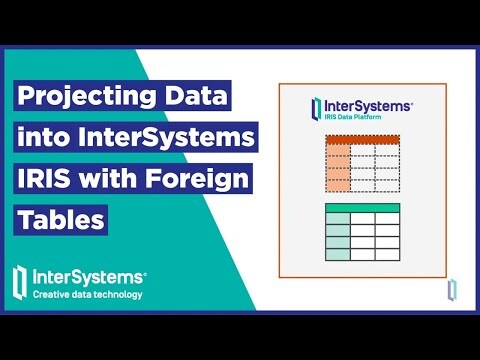Relational and non-relational databases represent two distinct ways to store and manage data.
Relational databases organize data in tables with fixed rows and columns, using SQL to link related data across multiple tables. They excel at handling structured data like financial records and inventory systems.
Non-relational databases take a different approach. They offer flexible data formats that can handle diverse types of information - from documents and key-value pairs to graphs and columns. This makes them better suited for unstructured data like social media content, multimedia files, and streams of XML and JSON content.
The main distinctions come down to:
- Structure: Relational uses fixed tables; non-relational uses other structures and other flexible formats
- Data types: Relational works best with structured data; non-relational handles varied data types
- Consistency: Relational ensures immediate consistency; non-relational may trade some consistency for speed and flexibility
In this article, we'll break down the strengths, weaknesses, and use cases of each database type.
Key Takeaways
- Relational and non-relational databases are two types of storing data for businesses. The former uses tables to organize information, while the latter is more varied and can store data in other types of structures such as graphs or hierarchies.
- Choosing the right database is key to saving time retrieving data and gaining deeper insight into your data.
- Using the right data structure for your business is easier with a database that supports both SQL and NoSQL, such as InterSystems IRIS®. InterSystems provides businesses across several industries the ability to store, manage, and retrieve data more easily in the formats and structures they want.

Data Types and Structures
Today's businesses work with three main types of data, each requiring specific storage and management approaches:
- Structured Data: The most traditional form of business information that fits into organized tables with defined rows and columns (relational databases). Examples include sales records, customer databases, and financial data - making it ideal for core business operations and reporting.
- Semi-Structured Data: Information that has some organizational elements but doesn't fit neatly into rigid database tables (best handled by the relational database model). Think of email messages, XML files, and IoT sensor data - this type combines both organized and free-form elements while maintaining enough structure for effective analysis.
- Unstructured Data: The fastest-growing category that includes information without pre-defined organization like social media posts, images, videos, and customer feedback. This type requires specialized storage solutions and a flexible data model (usually non-relational) to extract meaningful insights.
Database Management Systems (DBMS)
A Database Management System (DBMS) is software that controls databases, handling data storage, retrieval, and security.
A database itself is just organized data stored on disk - you can't "see" it directly. Think of it like the contents of a filing cabinet that's locked inside a sealed room. This is where the Database Management System (DBMS) comes in.
The DBMS acts as your way to:
- View the data (like opening the filing cabinet)
- Work with the data (like adding, changing, or removing files)
- Protect the data (like having a lock and key)
- Organize the data (like having labels and folders)
Database Management Systems (DBMS) come in two main types. Relational DBMS use SQL (Structured Query Language) to handle structured data in tables. Non-relational DBMS, also called NoSQL, employ specialized query methods based on their data model - from document queries to graph traversal operations.
InterSystems IRIS, for example, supports several approaches, offering:
- SQL queries for traditional data operations
- Document queries for document-style data
- Object queries for object-oriented data
- Vector and column-store queries on dedicated data types
- High-speed analytics processing
- Native multi-model support
Choosing the right DBMS depends on data types, scalability needs, and performance requirements. There are a small number of systems, such as InterSystems IRIS, which support both relational and non-relational database models for flexibility.
Exploring Relational Databases
As we've established, relational databases use tables to store data and manage relationships between pieces of information. They rely on a structured approach to organize and retrieve data efficiently.
The Relational Model
The relational model is the foundation of relational databases. It organizes data into tables with rows and columns, much like an Excel spreadsheet. Each row represents a record, while each column represents a specific attribute of that record. Tables are linked through keys. Primary keys uniquely identify each row in a table while foreign keys establish connections between tables. This structure allows for complex data relationships and efficient querying.
Relational databases support data normalization, a process that reduces data redundancy and improves data integrity by breaking down large tables into smaller, more focused ones.
SQL: Structured Query Language
SQL is the standard language for working with relational databases. It allows users to create, read, update, and delete data in tables.
Some common SQL commands include:
- SELECT: Retrieve data from one or more tables
- INSERT: Add new records to a table
- UPDATE: Change existing records
- DELETE: Remove records from a table
SQL also supports complex operations like:
- Joining tables
- Filtering data with WHERE clauses
- Sorting results with ORDER BY
- Grouping data with GROUP BY
ACID Properties
ACID properties are key features of relational databases that ensure data reliability:
- Atomicity: All parts of a transaction succeed or fail together. This means if any part of a database operation fails, the entire operation is rolled back as if it never happened.
- Consistency: Data remains valid according to defined rules. This means all database operations must follow preset constraints, formats, and relationships, ensuring data stays accurate and logically sound.
- Isolation: Concurrent transactions don't interfere with each other. This means when multiple users or processes access the database simultaneously, their operations are handled as if they occurred one after another, preventing data conflicts.
- Durability: Completed transactions are permanent, even after system failures. This means once a transaction is confirmed complete, the changes are saved permanently to storage and won't be lost, even if the system crashes immediately afterward.
These properties help maintain data integrity and prevent data corruption in multi-user environments.
Common Relational Databases
When considering a relational database management system (RDBMS), organizations can choose between open-source solutions and enterprise platforms:
Open-Source RDBMS:
- PostgreSQL: Advanced features and robust reliability
- MySQL: Widely used for web applications
These systems offer solid functionality for basic database needs. However, modern enterprises often require more comprehensive solutions.
InterSystems IRIS goes beyond traditional RDBMS capabilities by offering:
- Multi-model database support (both relational and non-relational)
- Translytical ability for both OLTP and OLAP (transaction and analytics)
- Built-in high-performance analytics
- Advanced healthcare data handling
- Enterprise-grade scalability
- Unified development platform
- Native interoperability features
While open-source solutions work well for basic needs, InterSystems IRIS provides a complete platform that eliminates the need to maintain multiple database systems.
It handles everything from simple data storage to complex analytics, all within a single, reliable environment.

Exploring Non-relational Databases
Non-relational databases offer flexible data storage solutions that differ from traditional table-based models. These systems handle diverse data types and scale well for large datasets.
NoSQL: Beyond Traditional Structures
Non-relational databases, also known as NoSQL databases, store data in formats other than tables. They can manage unstructured data like emails, videos, and images.
NoSQL systems don't require a fixed schema - this means different records can have different fields or structures without needing to update the entire database, much like how you can add a new column to just one Excel row without changing all other rows.
These databases are perfect for handling big data and high-traffic websites, often processing large volumes of information quickly and efficiently.
Types of Non-Relational Databases
There are several types of non-relational databases:
Key-value stores
Key-value stores are the simplest type of non-relational database. They function like a basic dictionary, storing data in pairs where each unique key connects to a specific value.
You can think of it like a giant lookup table - perfect for quick operations like managing user sessions, storing preferences, or handling cached data.
Document databases
Document databases take a more flexible approach by storing data in JSON-style records. Unlike rigid table structures, each document can contain different fields and nested information.
This makes them ideal for content management systems, user profiles, and product catalogs where data structures might vary between entries.
Graph databases
Graph databases are great at handling connected information by using nodes and relationships. They're built specifically for data that involves complex relationships, making them perfect for social networks or recommendation systems where understanding connections between data points is crucial.
BASE Model
Non-relational databases often follow the BASE model:
- Basically Available: The database keeps working even if some parts fail, prioritizing uptime over perfect consistency.
- Soft State: The database's values might change over time even without new inputs, since updates can happen at different times across the system.
- Eventually Consistent: While data might temporarily differ across different parts of the database, it will all sync up and become consistent given enough time - like how your email inbox might show different numbers of messages on your phone and computer before syncing.
This approach differs from the ACID model used in relational databases. BASE prioritizes availability and partition tolerance over strict consistency. In BASE systems, data may not be immediately consistent across all nodes. It becomes consistent over time. This trade-off allows for better scalability and performance in distributed systems.
The BASE model suits applications that can tolerate some data lag. It's less ideal for systems requiring real-time consistency, like banking transactions.

Scalability and Performance
One of the biggest challenges in enterprise data management is staying accurate and fast as data increases. Database systems must handle growing data volumes and user loads efficiently. Different approaches to scaling and optimizing performance can impact system capabilities.
Horizontal vs. Vertical Scaling
Vertical scaling means adding more power to a single server - like upgrading a computer with better processors and more memory. While this approach works well for immediate growth, it eventually hits physical limits and becomes increasingly expensive, much like trying to make one computer infinitely powerful.
Horizontal scaling takes a different approach by spreading data across multiple servers, each handling a portion of the workload. Instead of one super-powerful machine, you have many regular machines working together. This approach offers nearly unlimited growth potential because you can keep adding more servers as needed. It's particularly useful for handling large amounts of data or many simultaneous users.
Non-relational databases can excel at horizontal scaling by forfeiting transactional consistency.
While relational databases can achieve distributed data storage through techniques like sharding (splitting data across servers), this process is often more complex and challenging to manage. InterSystems IRIS has sharding and as well as other methods such as mirroring (both synchronously and asynchronously) and the unique and powerful feature of keeping distributed caches in sync. This is called Enterprise Cache Protocol (ECP).
The ability to scale horizontally becomes increasingly important as applications grow, especially for use cases involving big data or high-traffic applications where the workload needs to be distributed across many machines.
Data Integrity and Consistency
Data integrity is vital for maintaining reliable information in databases.
A relational database uses constraints to enforce rules and keep data accurate. These include:
- Primary key constraints: Ensure unique identifiers for each record
- Check constraints: Validate data before it's added to the database
- Not null constraints: Require certain fields to have a value
Non-relational databases handle data accuracy differently. They often rely on application-level checks rather than built-in constraints.
Some NoSQL databases offer atomic operations to maintain data accuracy during updates, preventing partial or incomplete changes to the data.
Referential Integrity
Referential integrity is a key feature of relational databases, maintaining the relationships between tables using foreign keys. This ensures that:
- Data in related tables stays consistent
- Orphaned records are prevented
- Updates and deletions are handled properly across related tables
Non-relational databases typically don't enforce referential integrity at the database level. Instead, they may use:
- Application logic to maintain relationships
- Denormalized data structures to reduce the need for complex relationships
This approach can offer more flexibility, but requires careful management to avoid data inconsistencies.
Use Cases and Applications
Relational and non-relational databases serve different needs in modern data management. Each type is better suited to specific scenarios, from e-commerce platforms to complex analytics systems.
E-Commerce and Big Data
E-commerce platforms often use both database types. Relational databases manage orders, payments, and inventory. Non-relational databases handle product catalogs and user behavior data.
Big data applications often favor non-relational databases. These can process vast amounts of unstructured data quickly. They're used for:
- Customer behavior analysis
- Recommendation engines
- Fraud detection systems
Business Intelligence and Analytics
Business intelligence tools often use relational databases due to how well they executive complex queries and maintain data integrity. They're also ideal for generating reports and dashboards.
For real-time analytics, non-relational databases are often preferred. They can ingest and process data streams rapidly. This is useful for:
- Monitoring systems
- IoT device data
- Social media sentiment analysis
Some companies use a mix of both. They might store raw data in a non-relational database, then they move processed data to a relational database for deeper analysis.
Ready to Build Better with Modern Database Technology?
Managing today's complex data needs requires a solution that goes beyond traditional databases. InterSystems IRIS combines the best of both relational and non-relational approaches in one unified platform.
Why choose
InterSystems IRIS?
- Handle any type of data - from structured patient records to unstructured medical imaging
- Process both transactions and analytics in the same system
- Scale easily as your data needs grow
- Build AI-enabled applications without complex integrations
- Connect previously isolated data systems
- Have you database on-premises, in the cloud, or both
Take the next step in your data management journey. Whether you're building healthcare applications, managing financial transactions, or analyzing big data, InterSystems IRIS provides the tools you need to succeed.
Try InterSystems IRIS For Free
Try InterSystems IRIS for free and experience how your business can thrive with a database management system that excels in performance at scale, availability, and security.
Frequently Asked Questions
- Handling large amounts of unstructured data
- Quick scaling of applications
- Flexible data models that change often
- Real-time web applicationsContent management systems
- IoT data storage
They are particularly useful in scenarios with rapidly changing data or where flexibility is key.






























